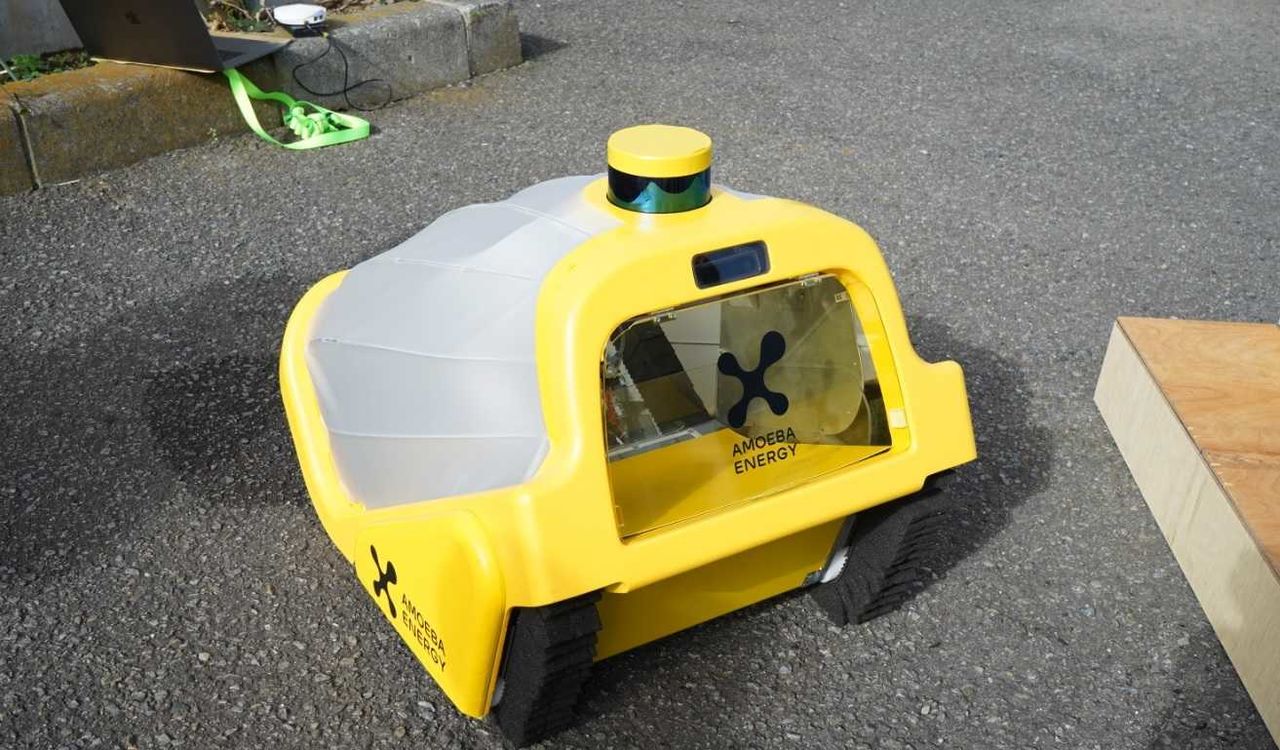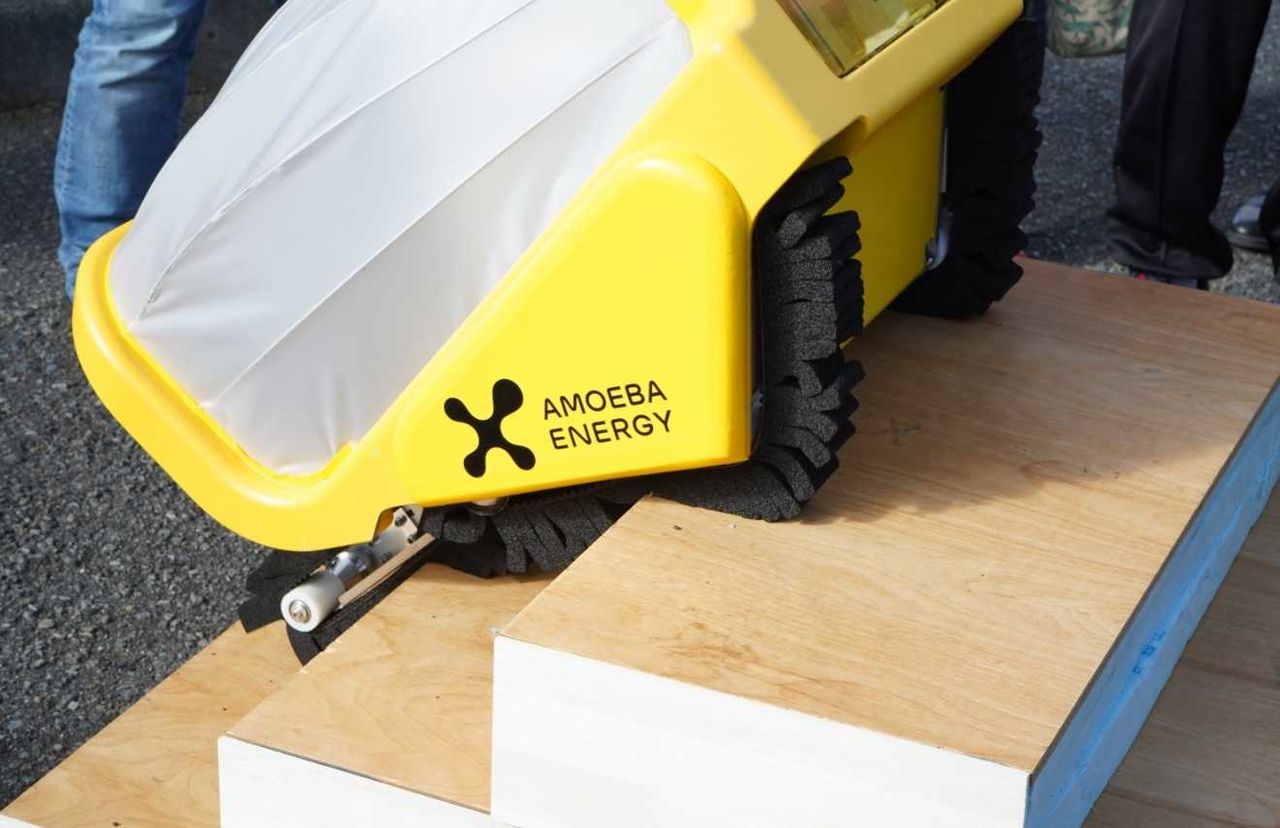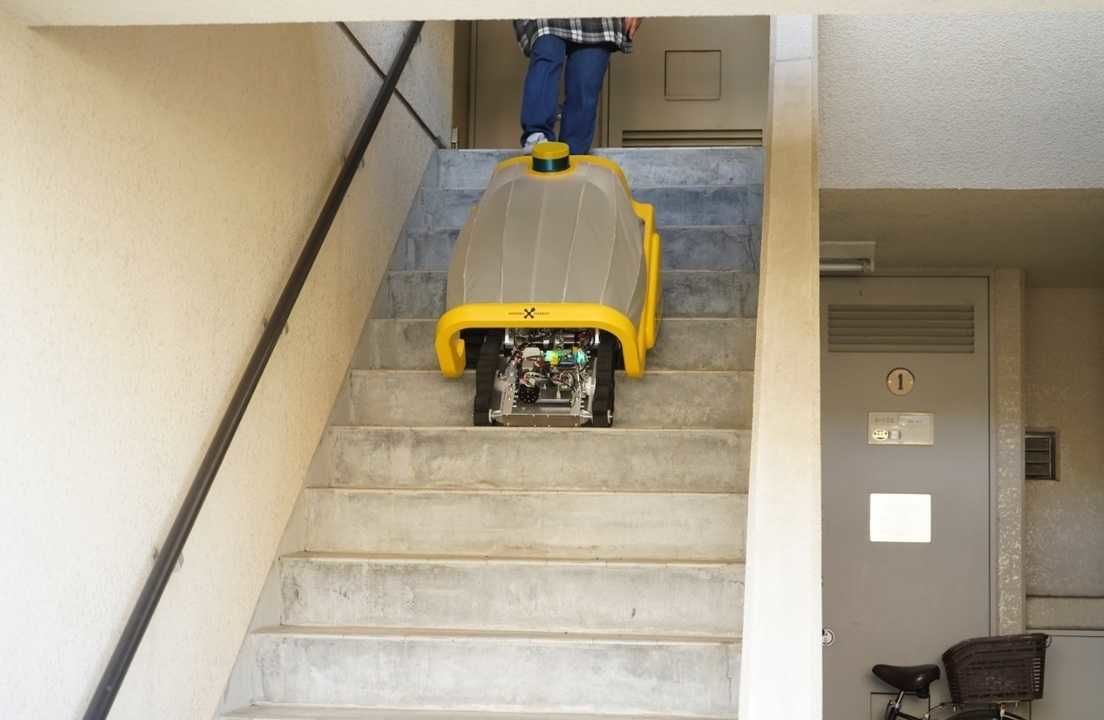A new kind of “soft-bodied” mobile robot may soon be a boon to elderly residents of public housing units lacking elevators. A recent on-site test reveals both the problems that still need to be solved and the considerable potential of the new technology.
Garbage Collecting Robot Takes to the Stairs
Many of Japan’s old public housing complexes have no elevators, making it difficult for elderly residents to perform simple daily chores like taking out the garbage. One attempt to address the problem has been the development of a “garbage-collecting robot” that can move up and down stairs. On December 5, 2019, an experiment was carried out using the novel robot at a municipal housing development in Fujisawa, Kanagawa Prefecture.
A part of a Fujisawa municipal project to promote robot-assisted applications for daily use, the stair-climbing robot was developed by a Keiō University startup business called Amoeba Energy.
The robot is 77 centimeters tall and can carry a maximum load of 6 kilograms at a maximum speed of 1 kilometer per hour. It is equipped with a pair of soft crawlers that give it the versatility to move up and down just about any conventional set of stairs, up to a maximum grade of 35 degrees, and a battery pack giving it around three hours of operation before recharging.
An Easier Life for Elderly Residents
The Shibuyagahara municipal housing complex where the experiment was carried out has five buildings, each three to four stories high. Most of the residents of the apartments, which lack elevators, are elderly, and a simple task like taking out the garbage can be daunting for those who live on the upper stories.
We asked an Amoeba Energy PR representative to explain the features of the robot used in the experiment.
“This robot can carry loads up and down stairs. It’s a ‘soft-bodied’ robot made of forgiving materials that make it safe to use and give it stability.” The soft treads, notes the company, mean that it will not harm a person even if it rolls over his or her feet.
“It usually takes a lot of technical expertise and expensive features like sensors to build a robot that can climb stairs. Even then, it hasn’t ever been easy to build something that can move with versatility and stability. Our robot’s soft crawlers, however, give it the flexibility needed to move over just about any kind of surface and even go up and down stairs.”
The soft material keeps the robot from scratching floors, notes the company representative, and makes it safer when in use. The soft material also helps to make the robot more familiar and appealing to its users.
“In our experiment, we set the robot to move at a speed of one kilometer per hour. And instead of limiting our tests to our own labs or a virtual environment, we purposely decided to try it out in a real-life situation, something we had never done before. Of course, safety was our primary concern throughout.”
With Japan’s declining birth rate and aging population, according to Amoeba Energy, more and more elderly people find it difficult to get out of their homes even for simple daily tasks like shopping. “This may be because they are frail or simply because of a lack of transportation,” says the PR rep. “We call these people ‘shopping refugees.’ One of our objectives is to give them greater freedom to do things on their own by using our robot.”
“We decided to start by testing our robot in a housing complex with no elevators, where most of the residents are elderly people. For this experiment, the task was to see if the robot could carry and dispose of a load of household waste.
“We started the experiment on the second floor of one of the buildings in the housing complex, loaded the robot with a bag of household garbage, and set it to climb down the stairs, go to the nearest garbage collection site, and unload the garbage bag.”
The reaction from residents was generally favorable. People said the robot would be really helpful and hoped the company would get it fully developed soon. “There were also suggestions for other unexpected uses, such as transporting produce from a nearby vegetable patch to a resident’s apartment.”
The Difficulty of Vertical Movement
Carrying out the experiment made the firm realize how great a need there is for this kind of technology—as well as how high the expectations are.
“We also learned that we’ll need to rethink the robot’s size and speed before it can be commercialized,” says the PR officer. “Given the size of the staircases and landings in typical apartment buildings and condominiums, there’s a limit to how big the robot can be.” More on-site tests will be necessary to find the best way to meet residents’ needs while also meeting the restrictions imposed by the environment.
“We’ll keep working on improvements and expanded applications. The robot’s ability to circumvent irregular terrain and carry loads could also prove useful in solving the ‘last mile’ delivery problem in the distribution industry, for example.”
In the test carried out on December 5, the robot was remote controlled by an engineer who used a controller device to send commands to the robot. The company is now looking into ways to automate the robot so that this kind of remote-control oversight will not be needed.
“The difficulty at the moment is trying to figure out how to get the robot to move vertically on its own,” explains the representative. “Autonomous movement is already being explored in the development of self-driving cars and food-delivery robots, but none of these new technologies address the need for movement between floors of a structure. Our robot needs to be able to move both laterally on a single floor and vertically between floors.”
Software designers are also involved in getting this helper robot into apartment buildings to handle garbage disposal tasks. “We’re in the process of developing an app that residents can use to call the robot to their door when they need it. This will feature a simple interface and hopefully will be easy for elderly people to use.”
The stair-climbing robot may soon become a real asset for elderly residents living on the upper floors of complexes without elevators. There are still challenges to overcome before it will be commercially viable, though. Amoeba Energy continues to work on its capability for vertical autonomous movement, and admits that it also needs to address the limitations of its relatively small load-carrying capacity.
Still, the potential applications extend beyond garbage disposal. It may not be long before such helpful automatons become a common sight in our communities.
(Originally published in Japanese on FNN’s Prime Online on December 17, 2019. Translated and edited by Nippon.com.)

[© Fuji News Network, Inc. All rights reserved.]



